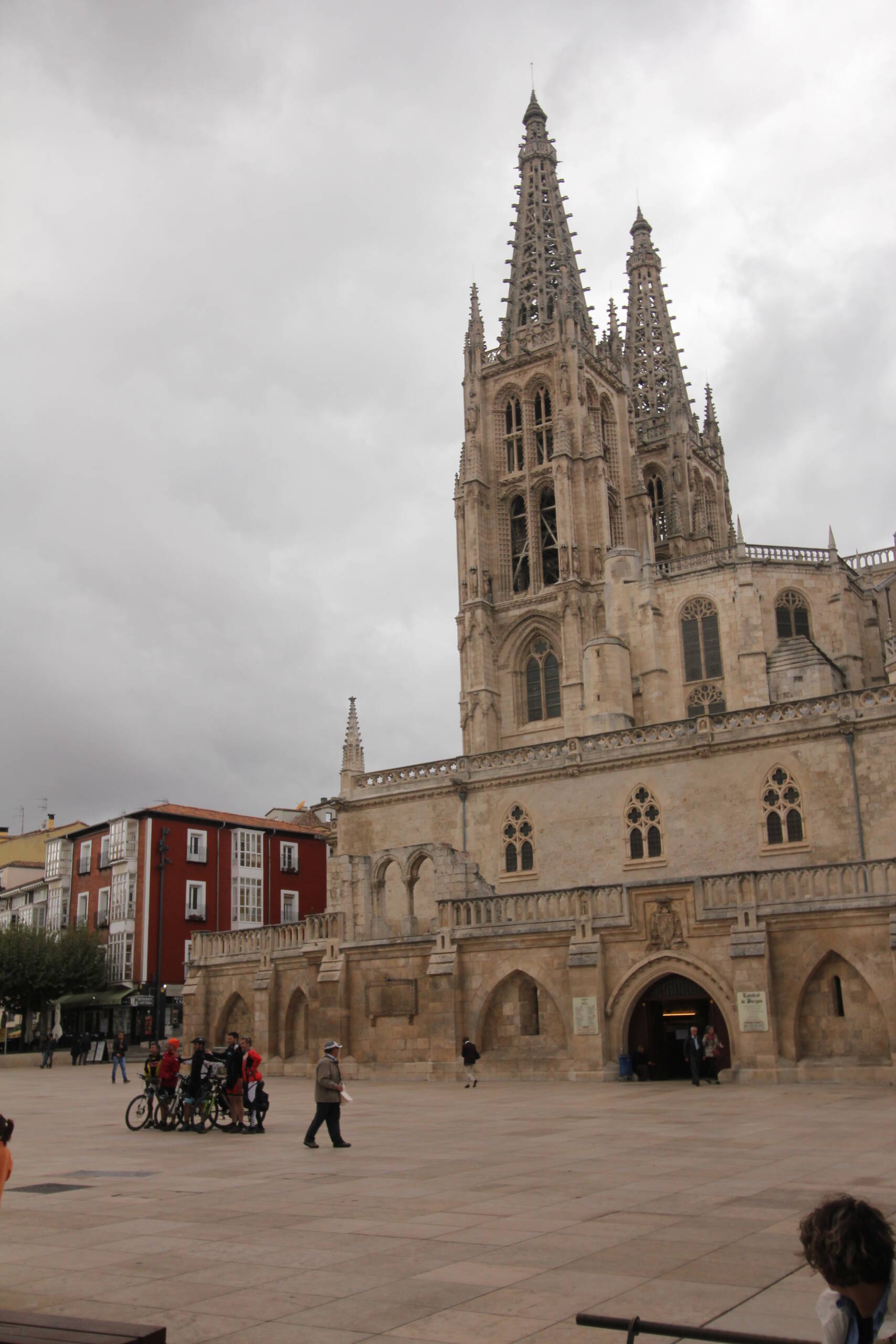Some places don’t just dominate a city—they define it. Burgos Cathedral is one of those places. Rising out of the heart of the old town, its soaring Gothic spires puncture the sky like stone lacework, intricate and defiant against the gray Castilian clouds. You step into the square before it, and the building seems almost unreal, too delicate for its size, too monumental to have been carved by human hands.

The twin spires that crown its façade are its most striking feature, shooting upward with such vertical ambition that they almost feel like a prayer made stone. But stand closer, and the detail is overwhelming: niches filled with saints, elaborate tracery, sharp pinnacles, and carvings that seem alive even after centuries of wind and weather. This is not just a cathedral, it’s a statement of medieval faith, power, and artistry—a UNESCO World Heritage site that pulls you back into the 13th century with every glance.
The plaza in front, broad and open, makes the cathedral even more imposing. Locals stroll across casually, cyclists lean on their bikes chatting in groups, and tourists crane their necks, cameras clicking, all dwarfed by the scale of the building behind them. It’s one of those places where daily life goes on right at the feet of history.
Burgos itself is a city rich in layers—pilgrims pass through on the Camino de Santiago, students fill the cafés, families linger in plazas—but the cathedral is always the anchor. Step inside, and you’ll find chapels brimming with Renaissance detail, golden altarpieces that shimmer in the dim light, and ceilings that spiral upward in stone constellations. Step outside, and the towers are there again, unchanging, watching over the city.
Visiting Burgos Cathedral feels like encountering the essence of Gothic Europe. It’s not just about architecture—it’s about how stone, sky, and human imagination combined to create something that still humbles anyone who stands in its shadow.
Leave a Reply